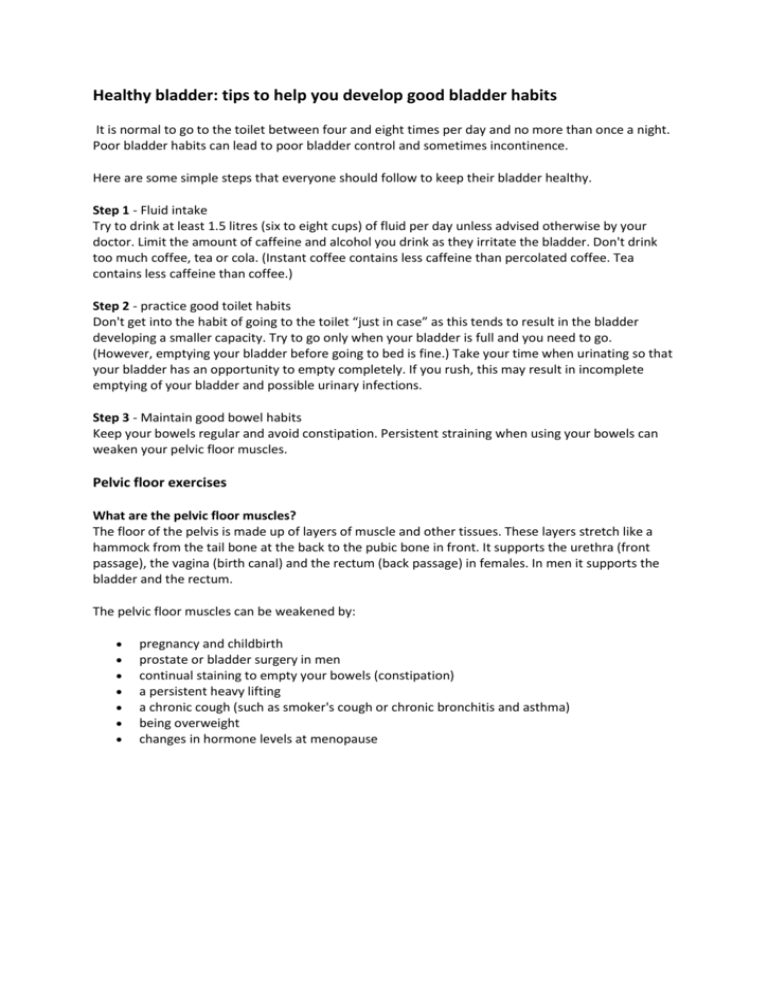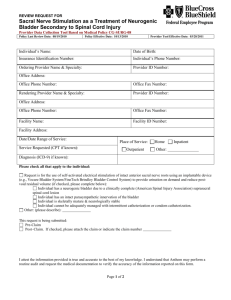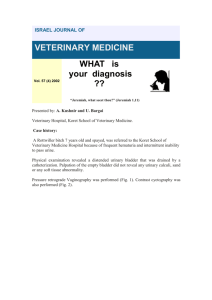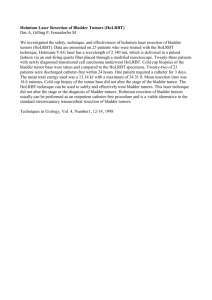Healthy bladder
advertisement

Healthy bladder: tips to help you develop good bladder habits It is normal to go to the toilet between four and eight times per day and no more than once a night. Poor bladder habits can lead to poor bladder control and sometimes incontinence. Here are some simple steps that everyone should follow to keep their bladder healthy. Step 1 - Fluid intake Try to drink at least 1.5 litres (six to eight cups) of fluid per day unless advised otherwise by your doctor. Limit the amount of caffeine and alcohol you drink as they irritate the bladder. Don't drink too much coffee, tea or cola. (Instant coffee contains less caffeine than percolated coffee. Tea contains less caffeine than coffee.) Step 2 - practice good toilet habits Don't get into the habit of going to the toilet “just in case” as this tends to result in the bladder developing a smaller capacity. Try to go only when your bladder is full and you need to go. (However, emptying your bladder before going to bed is fine.) Take your time when urinating so that your bladder has an opportunity to empty completely. If you rush, this may result in incomplete emptying of your bladder and possible urinary infections. Step 3 - Maintain good bowel habits Keep your bowels regular and avoid constipation. Persistent straining when using your bowels can weaken your pelvic floor muscles. Pelvic floor exercises What are the pelvic floor muscles? The floor of the pelvis is made up of layers of muscle and other tissues. These layers stretch like a hammock from the tail bone at the back to the pubic bone in front. It supports the urethra (front passage), the vagina (birth canal) and the rectum (back passage) in females. In men it supports the bladder and the rectum. The pelvic floor muscles can be weakened by: pregnancy and childbirth prostate or bladder surgery in men continual staining to empty your bowels (constipation) a persistent heavy lifting a chronic cough (such as smoker's cough or chronic bronchitis and asthma) being overweight changes in hormone levels at menopause Anyone with stress incontinence, that is, those who regularly lose urine when coughing, sneezing or exercising, should especially benefit from these exercises. Doing pelvic floor exercises Sit or lay down comfortably with the muscles of your thighs, buttocks and abdomen relaxed. Tighten the ring of muscle around the back passage as if you are trying to control diarrhoea or wind. Relax it. Practice this movement several times until you are sure you are exercising the correct muscle. Try not to squeeze your buttocks. Holding that squeeze then pull up the vagina / penis and the urethra all at once, lifting them up inside. Try to hold this contraction strongly as you count to five and then release and relax. You should have a definite feeling of “letting go”. Repeat (“squeeze and lift”) and relax. It is important to rest for about 10 seconds in between each contraction. If you find it easy to hold for a count of five, try to hold for longer - up to 10 seconds. Repeat this as many times as you are able, up to a maximum of eight to 10 squeezes. Now do five to 10 short, fast, but strong contractions. Do this exercise routine threetimes every day. While doing the exercises: do not hold your breath. Do not push down instead of squeezing and lifting up. Do not tighten your tummy, buttocks or thighs. What is an overactive bladder? An overactive bladder is when the bladder contracts suddenly without you having control, and when the bladder is not full. Overactive bladder syndrome is a common condition where no cause can be found for the repeated and uncontrolled bladder contractions. Overactive bladder syndrome is sometimes called an irritable bladder and may give symptoms such as: Urgency. A sudden urgent desire to pass urine. You are not able to put off going to the toilet. Frequency. Going to the toilet often - more than seven times a day. In many cases it is a lot more than seven times a day. Nocturia. This means waking to go to the toilet more than twice at night Urge incontinence occurs in some cases. This is a leaking of urine before you can get to the toilet when you have a feeling of urgency. What are the treatments for overactive bladder syndrome? Some general lifestyle measures (see steps 1-3, above) may help. Bladder training is a main treatment. This can work well in up to half of cases. Medication may be advised instead of, or in addition to, bladder training. Pelvic floor exercises (see above) should also be practiced at the same time. Bladder re-training The aim of bladder re-training is decrease the time between each visit to the toilet by holding on for as long as possible before you go to the toilet. This will seem difficult at first. For example, if you normally go to the toilet every hour, it may seem quite a struggle to last one hour and five minutes between toilet trips. When trying to hold-on, try distracting yourself. For example: Sitting straight on a hard seat may help Try counting backwards from 100 Try doing some pelvic floor exercises With time, it should become easier as the bladder becomes used to holding larger amounts of urine. The idea is gradually to extend the time between toilet trips and to train your bladder to stretch more easily. It may take several weeks, but the aim is to pass urine only five to six times in 24 hours (about every three to four hours). Make sure you drink a normal amount of fluids when you do bladder training (see above).







